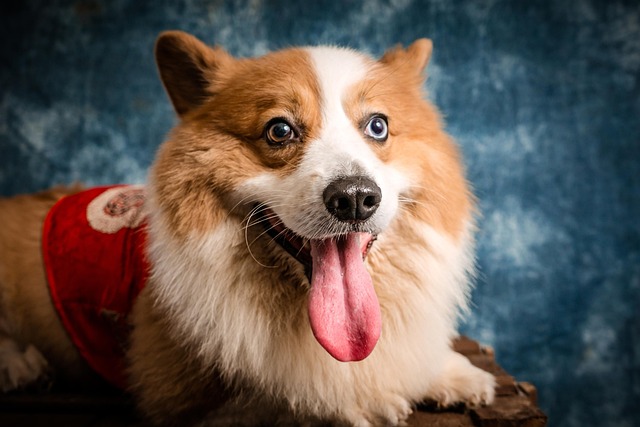
How can I tell if my dog's heatstroke is serious
Let’s be real: It’s a sticky August morning in Los Angeles, and you took your 2-year-old Golden Retriever, Max, for a walk a little later than usual
If you’re a new dog parent in the US—maybe you’re standing in the pet store aisle in your Phoenix apartment complex, staring at a shelf of dog probiotic chews while your 8-month-old Corgi, Milo, whines in his carrier, or you’ve heard other owners rave about them but wonder if they’re just a “fad”—you’ve probably asked: Do I really need to add this to Milo’s routine? Will it even help? The truth is, probiotics aren’t “one-size-fits-all” for dogs—but they can be a game-changer in specific situations. Let’s break down when they matter, why they work, and how to use them wisely.
First, let’s keep the science simple: A dog’s gut is full of “good bacteria” that help digest food, fight off sickness, and keep their mood steady. Sometimes, this balance gets thrown off—like after taking antibiotics (which kill good bacteria too), switching food too fast, or dealing with stress (like moving to a new apartment or a busy dog park). Probiotics are just extra good bacteria that help “reset” this balance. They’re not a magic cure—if your dog has a healthy gut, they might not need them. My friend Lisa in Texas learned this with her 2-year-old Beagle, Lua: Lua had diarrhea for a week after finishing antibiotics, and a vet recommended probiotics. Within 3 days, her stools were firm again. But when Lisa tried giving them to her other dog (who had no gut issues), she saw no difference—proof they’re only necessary when the gut needs a boost.

Here’s how to decide if probiotics are right for your dog and use them, step by step: Start with a vet check—always ask your vet first. They’ll tell you if your dog needs probiotics (e.g., post-antibiotics, chronic diarrhea) or if something else is going on. If they say yes, pick a dog-specific probiotic (human probiotics have different strains that might not work). Look for labels with “live cultures” and avoid ones with added sugar (it upsets guts!). For apartment living, mix powdered probiotics into their food (add a little warm water to make it stick) or give chews as a treat—pair it with positive reinforcement: say “good probiotic!” and give a scratch behind the ears so they associate it with something nice. Never force them to take it (punishment goes against US animal welfare norms) and don’t overdo it—too many probiotics can cause gas or loose stools. If you don’t see improvement in 3–5 days, call your vet.
Now, let’s tie in rules and habits that matter. Every US state requires core vaccines (distemper, parvovirus)—a healthy gut boosts their immune system, so probiotics can help vaccines work better, but they’re no replacement for shots. Skipping vaccines could get you fined $150+ in California or New York, and a sick dog’s gut balance is already off—probiotics might help, but vaccines are non-negotiable. When you walk your dog (even if they’re on probiotics), always clean up their poop—cities from Seattle to Boston fine up to $300 for leaving waste, and their stool is a great way to tell if probiotics are working (firm, regular poop means success). For apartment living, avoid sudden diet changes (a top cause of gut imbalance)—mix new food with old over a week, and use probiotics to ease the transition. At the dog park, don’t let them eat grass or trash (which irritates guts)—redirect with a toy, and praise them for playing instead.
Probiotics aren’t necessary for every dog, but they’re a useful tool when your pup’s gut needs help. With vet guidance and smart use, you’ll know exactly when to reach for them. Before you know it, Milo will be back to eating normally and having consistent poops—no more stress about whether you’re “missing” something. Remember: It’s about supporting their gut, not just following a trend.

Let’s be real: It’s a sticky August morning in Los Angeles, and you took your 2-year-old Golden Retriever, Max, for a walk a little later than usual

You're enjoying a summer afternoon at the park when you notice your dog has stopped panting and appears disoriented - their gums are bright red

Let’s paint the picture: You’re in your Denver apartment, watching your 4-year-old Boston Terrier, Ruby, plop down mid-play session with her favorite toy

Many dog owners notice their pets nails seem shorter after regular walks,but how much does this daily activity actually help?The answer depends on where you walk—concrete sidewalks or asphalt streets gently file nails as a dog's paws hit the ground

Most dog owners notice their pup scooting across the carpet at some point, but few connect it to impacted anal glands. These small sacs near a dog’s rectum secrete a scent for marking territory

Most vets agree that regular dog teeth cleaning is key to avoiding painful dental issues later. For healthy adult dogs, a professional cleaning at the vet’s office every 12 to 18 months usually works well.